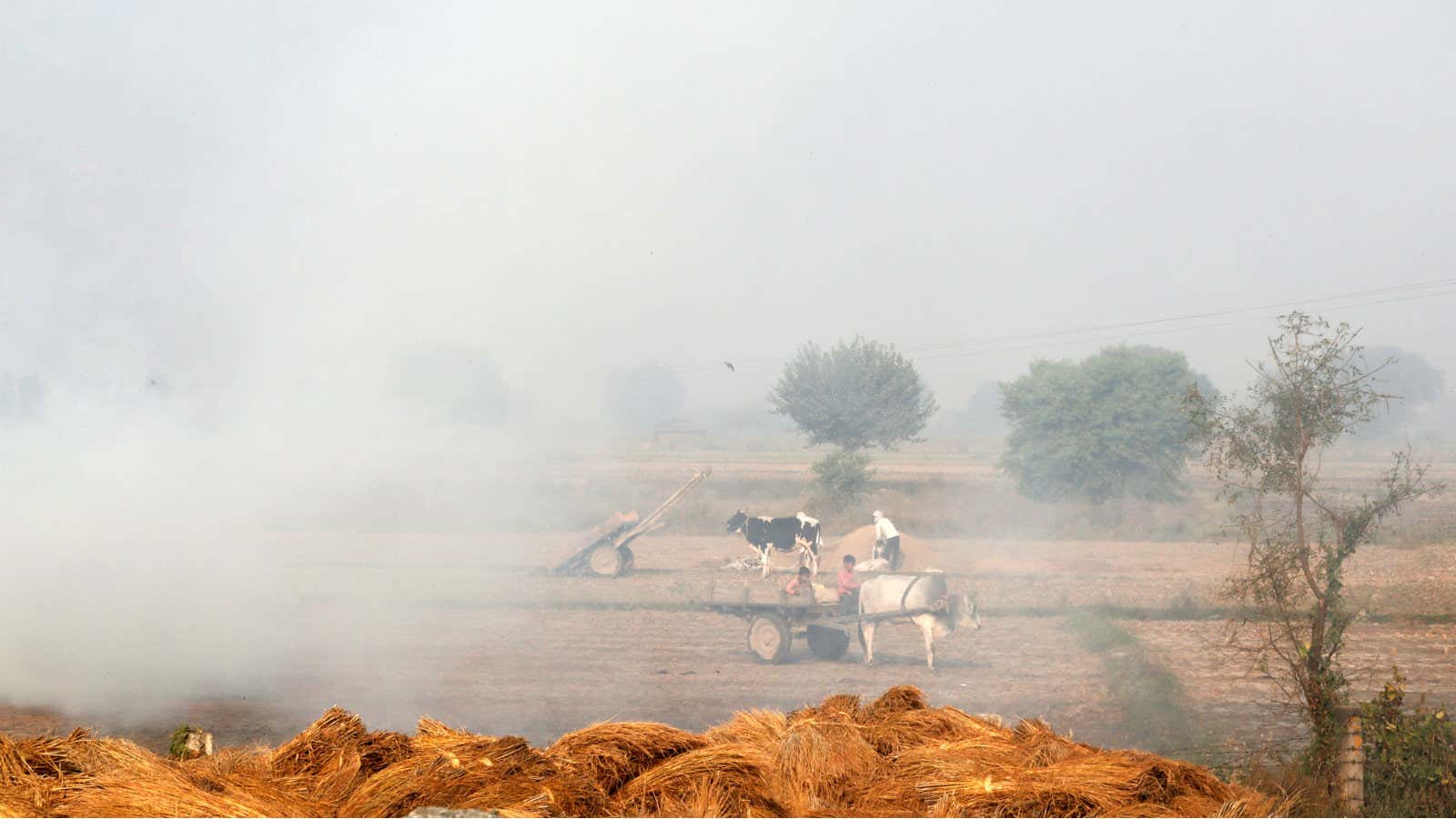The human cost of India’s air pollution crisis is massive, especially in some of its poorest and least developed states.
In 2017, one in eight deaths in India were attributable to air pollution, according to a new study published in the Lancet Planetary Health journal. Written by a team of 76 researchers as part of the 2017 Global Burden of Disease study, the study analyses the exposure to air pollution across Indian states and its impact on deaths, disease, and life expectancy.
The researchers found that over three-quarters (77%) of India’s population was exposed to ambient particulate matter (PM2.5) far above the healthy limit of 40 μg/m3 recommended by the US National Ambient Air Quality Standards.
Delhi, which has hogged the headlines for its annual toxic smog, recorded a staggering “population-weighted mean PM2.5 level” of 209·0 μg/m³ in 2017, according to the paper. Other north Indian states, notably Uttar Pradesh (UP), Bihar, and Haryana, also witnessed dangerous exposure levels of over 125 μg/m³. UP and Bihar also rank among the lowest in India’s socio-demographic index, a measure of development based on variables such as income and educational attainment.
In 2017, UP recorded the most deaths attributable to air pollution, with 260,028 lives lost. It was followed by Maharashtra (108,038) and Bihar (96,967).
The study shows that the average life expectancy in India would have been 1.7 years higher if air pollution levels were at their permissible levels. But the difference is even larger for states such as Rajasthan, UP, and Haryana, where residents’ lives are shortened by over two years due to air pollution.
Adding to the problem is household air pollution, particularly deadly in less developed states like UP, Bihar, Madhya Pradesh, and Rajasthan. Though the government launched the Pradhan Mantri Ujjwala Yojana scheme in 2016 to discourage the use of polluting cooking fuels, household air pollution claimed the lives of an estimated 481,738 Indians in 2017, according to the Lancet study.
“Even with substantial increasing provision of clean cooking fuels in India, more than half of India’s population was exposed to household air pollution from solid cooking fuels in 2017,” the researchers write.
This isn’t the first time researchers have warned India about the risks of its air pollution crisis. But the granular state-wise breakdown shows there’s a huge variation between Indian states when it comes to exposure to pollution and the risks to health and life expectancy. As a result, the Lancet study argues, it’s more important than ever for India’s pollution policies to adapt to the diverse realities on the ground.
